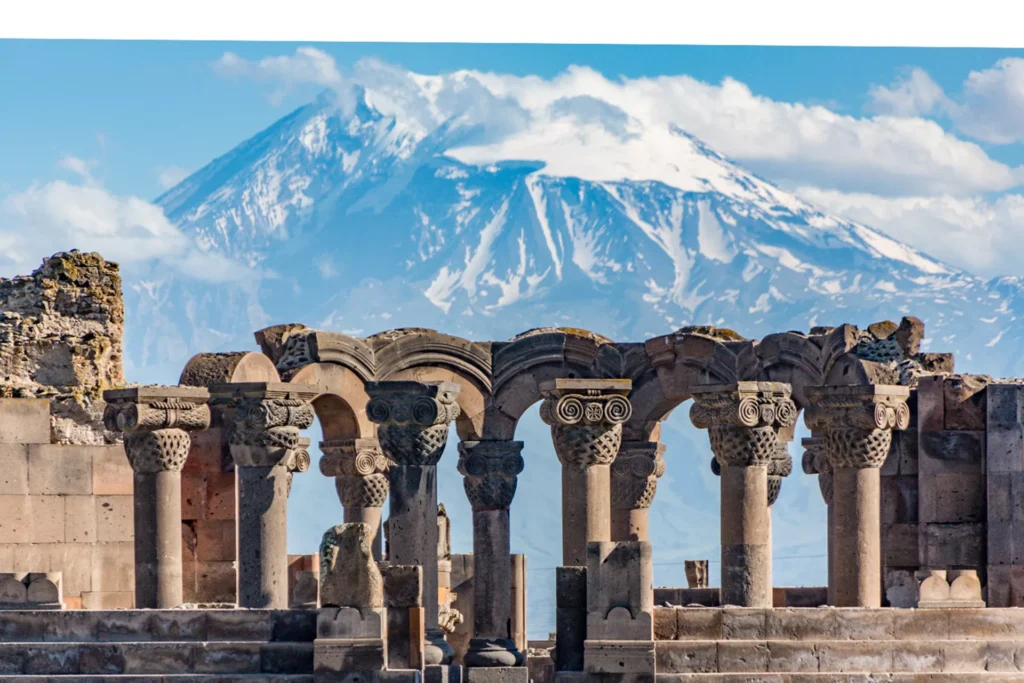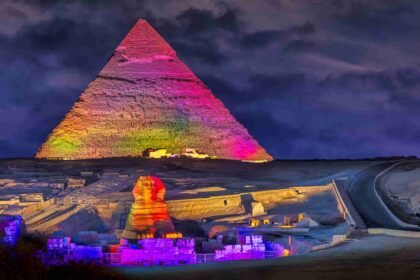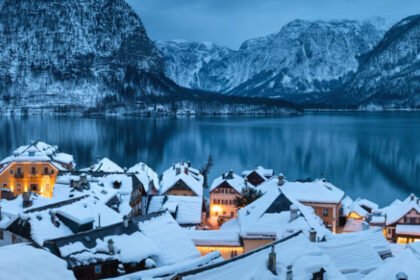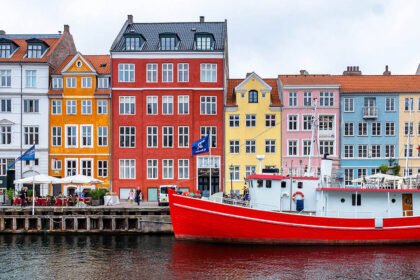Nestled in the South Caucasus region between Europe and Asia, Armenia is a country rich in history, culture, and natural beauty. Known as the first nation to adopt Christianity as a state religion, Armenia boasts an impressive collection of ancient churches, monasteries, and historical sites set against breathtaking landscapes. From the bustling capital of Yerevan to the serene shores of Lake Sevan, Armenia offers travelers a unique and unforgettable experience. This article provides a comprehensive guide to everything you need to know before visiting this fascinating country.
1. A Glimpse into Armenia’s History

Armenia is one of the oldest countries in the world, with a history that dates back over 3,000 years. The Kingdom of Urartu, which existed from around 860 to 590 BC, is considered the precursor to the Armenian nation. Armenia’s rich historical tapestry includes periods of independence, foreign domination, and cultural renaissance.
One of the most significant events in Armenian history was the adoption of Christianity as the state religion in 301 AD, making Armenia the first Christian nation in the world. This decision has profoundly influenced the country’s culture and identity, as evidenced by the numerous ancient churches and monasteries that dot the landscape.

Throughout its history, Armenia has been a crossroads of various empires, including the Romans, Persians, Byzantines, and Ottomans. The tragic Armenian Genocide of 1915-1917, during which an estimated 1.5 million Armenians were killed by the Ottoman Empire, remains a central and painful chapter in the nation’s history. Armenia regained its independence from the Soviet Union in 1991, marking the beginning of a new era for the country.
2. The Rich Cultural Heritage of Armenia
Armenian culture is a blend of ancient traditions and modern influences, deeply rooted in its Christian heritage. The Armenian Apostolic Church, one of the oldest Christian denominations, plays a central role in the country’s cultural identity. The architectural style of Armenian churches, characterized by their distinctive conical domes and cross-shaped designs, has influenced Christian architecture across the region.
Music and dance are integral to Armenian culture. Traditional Armenian music is often accompanied by instruments like the duduk (a woodwind instrument) and the kanun (a string instrument). Folk dances, such as the energetic Kochari, are performed at celebrations and gatherings.

Armenian literature has a long and storied history, with the 5th-century historian Movses Khorenatsi and the medieval poet Narekatsi among the most revered figures. Modern Armenian literature and cinema continue to thrive, with works that reflect the country’s complex history and cultural richness.
Armenian cuisine is another highlight, featuring a variety of dishes that reflect the country’s agricultural bounty and cultural influences. Staples include lavash (traditional flatbread), khorovats (grilled meats), dolma (stuffed grape leaves), and various dairy products like matzoon (yogurt). Armenia is also known for its brandy, particularly the legendary Ararat brandy.
3. Languages Spoken in Armenia
The official language of Armenia is Armenian, an ancient Indo-European language with its own unique alphabet created by the scholar Mesrop Mashtots in the early 5th century. The Armenian language has two main dialects: Eastern Armenian, spoken in Armenia and Iran, and Western Armenian, historically spoken in the Armenian diaspora, particularly in Turkey and the Middle East.
Russian is also widely spoken, a legacy of Armenia’s time as part of the Soviet Union. English is increasingly popular, especially among the younger generation and in tourist areas. However, knowing a few basic phrases in Armenian will be greatly appreciated by the locals and can enhance your travel experience.
4. Currency and Money Matters
The official currency of Armenia is the Armenian dram (AMD). ATMs are widely available in cities and larger towns, and credit cards are accepted in most hotels, restaurants, and shops in urban areas. However, it’s advisable to carry cash, particularly when traveling to rural regions.
The cost of travel in Armenia is relatively affordable, making it an attractive destination for budget-conscious travelers. However, as with any travel, it’s wise to have a mix of payment methods, including both cash and cards.
5. Best Times to Visit: Seasons and Weather

Armenia experiences a continental climate, with hot summers and cold winters. The country’s diverse topography means that the weather can vary significantly from one region to another. Here’s a breakdown of the seasons and the best times to visit:
- Spring (March to May): Spring is one of the best times to visit Armenia, as the weather is mild and the countryside is in full bloom. It’s an ideal season for exploring the many historical sites and enjoying outdoor activities.
- Summer (June to August): Summer in Armenia can be hot, particularly in the lowland areas like Yerevan. However, this is also the best time to visit mountainous regions like Dilijan and Lake Sevan, where the temperatures are cooler and ideal for hiking and water sports.
- Autumn (September to November): Autumn is another great time to visit, with pleasant weather and the added bonus of the harvest season. The fall colors in the forests and vineyards add an extra layer of beauty to the landscape.
- Winter (December to February): Winter is cold, with snow in many parts of the country. This is the season for skiing and snowboarding in the mountains, particularly at the popular Tsaghkadzor ski resort. Yerevan also has a festive atmosphere during the winter months.
6. Top 10 Destinations to Explore in Armenia
Armenia is filled with historical sites, natural wonders, and cultural landmarks. Here are the top 10 destinations you shouldn’t miss:
1. Yerevan
The capital city of Armenia, Yerevan, is one of the oldest continuously inhabited cities in the world. It’s a vibrant city where ancient history meets modern life. Visit the Republic Square, the Cascade Complex, and the Armenian Genocide Memorial for a deeper understanding of the country’s past.
2. Lake Sevan
Lake Sevan is one of the largest high-altitude lakes in the world and a popular destination for locals and tourists alike. The lake is surrounded by monasteries, beaches, and hiking trails. Don’t miss the Sevanavank Monastery, which offers stunning views over the lake.
3. Geghard Monastery
A UNESCO World Heritage site, Geghard Monastery is a stunning example of medieval Armenian architecture. Partially carved out of the surrounding rock, the monastery is set in a dramatic gorge and is known for its acoustics and spiritual atmosphere.
4. Garni Temple
Located near Geghard, Garni Temple is the only surviving pagan temple in Armenia, dating back to the 1st century AD. The temple is dedicated to the sun god Mihr and offers panoramic views of the surrounding mountains and the Azat River Gorge.
5. Dilijan National Park
Often referred to as the “Switzerland of Armenia,” Dilijan National Park is a haven for nature lovers. The park is home to lush forests, scenic trails, and ancient monasteries like Haghartsin and Goshavank. It’s an ideal destination for hiking, birdwatching, and relaxation.
6. Tatev Monastery
Perched on the edge of a deep gorge in southern Armenia, Tatev Monastery is one of the country’s most iconic landmarks. The monastery is accessible via the world’s longest reversible cable car, known as the Wings of Tatev, which offers breathtaking views of the Vorotan River Gorge.
7. Khor Virap
Khor Virap is a monastery located near the Turkish border, offering unparalleled views of Mount Ararat, the national symbol of Armenia. The site is historically significant as the place where Saint Gregory the Illuminator was imprisoned before converting the Armenian king to Christianity.
8. Noravank Monastery
Located in a narrow gorge of red rocks, Noravank Monastery is famous for its dramatic setting and unique architectural features. The surrounding landscape is particularly striking at sunset when the red rocks glow in the evening light.
9. Gyumri
Gyumri is Armenia’s second-largest city and a center of arts and culture. The city has a rich history and is known for its 19th-century architecture, vibrant arts scene, and welcoming people. Visit the Kumayri Historic District and the Black Fortress for a glimpse into Gyumri’s past.
10. Areni Wine Region
Armenia is one of the oldest wine-producing regions in the world, and the village of Areni is at the heart of this tradition. The Areni-1 Cave complex, where the world’s oldest known winery was discovered, is a must-visit. The area is also known for its annual wine festival, which celebrates Armenian wine and culture.
7. Things to Do: From Ancient Monasteries to Modern Marvels
Armenia offers a wide range of activities for travelers with diverse interests. Here are some top things to do:
- Explore Ancient Monasteries: Armenia is known for its medieval monasteries, many of which are UNESCO World Heritage sites. Must-visit monasteries include Geghard, Tatev, Haghpat, and Noravank.
- Visit Museums: Learn about Armenia’s rich history and culture at the many museums in Yerevan, including the History Museum of Armenia, the Armenian Genocide Museum, and the Matenadaran, which houses a vast collection of ancient manuscripts.
- **Hike in the Mountains**: Armenia’s diverse landscapes offer excellent hiking opportunities. Popular trails include those in Dilijan National Park, the slopes of Mount Aragats, and the rugged terrain around Tatev.
- Ski in Tsaghkadzor: During the winter months, head to Tsaghkadzor, Armenia’s premier ski resort, for skiing, snowboarding, and other winter sports.
- Taste Armenian Cuisine: Savor traditional Armenian dishes like khorovats (grilled meat), dolma (stuffed vegetables), and ghapama (stuffed pumpkin). Don’t forget to try Armenian brandy and wine.
- Attend a Cultural Festival: Armenia has a vibrant calendar of cultural festivals, including the Yerevan Wine Days, the Areni Wine Festival, and the Vardavar Water Festival, where people splash water on each other in a joyful celebration.
8. Festivals and Events: Celebrating Armenian Traditions
Armenia’s festivals and events reflect its rich cultural heritage and traditions. Some of the most notable include:
- Vardavar (July): Vardavar is one of the most popular and fun festivals in Armenia, where people of all ages splash water on each other. It’s a tradition rooted in pagan times and now celebrated as part of the Christian calendar.
- Areni Wine Festival (October): Held in the village of Areni, this festival celebrates Armenia’s ancient winemaking traditions with wine tasting, music, and dance.
- Yerevan Wine Days (May): This event turns the streets of Yerevan into a lively celebration of Armenian wine, with numerous wineries showcasing their products.
- Independence Day (September 21st): Armenia’s Independence Day is celebrated with parades, concerts, and fireworks, particularly in Yerevan’s Republic Square.
- Dolma Festival (May): Dedicated to the beloved Armenian dish, dolma, this festival features a variety of stuffed grape leaves, vegetables, and other dolma variations.
9. Practical Travel Tips for Armenia
- Visas: Citizens of many countries, including the EU, the US, and Canada, can enter Armenia without a visa for stays of up to 180 days. Others may need to obtain an e-visa or visa on arrival.
- Safety: Armenia is generally a safe country for tourists. However, as with any destination, it’s important to take standard precautions, especially in crowded areas and when using public transportation.
- Transportation: Armenia has an extensive network of minibusses (marshrutkas) that connect cities and towns. Taxis are also widely available, and Yerevan has a reliable metro system. Renting a car is a good option for exploring rural areas.
- Health: Tap water is safe to drink in Yerevan and other major cities. Armenia does not require any special vaccinations for travelers.
10. Armenia: A Hidden Gem Waiting to Be Discovered
Armenia’s rich history, vibrant culture, and stunning landscapes make it a destination that captivates the hearts of those who visit. Whether you’re drawn to the ancient monasteries, the natural beauty of its mountains and lakes, or the warm hospitality of its people, Armenia offers a travel experience like no other. It’s a country where tradition meets modernity, and where every corner has a story to tell. Armenia is a hidden gem waiting to be discovered by travelers seeking a unique and enriching experience.












